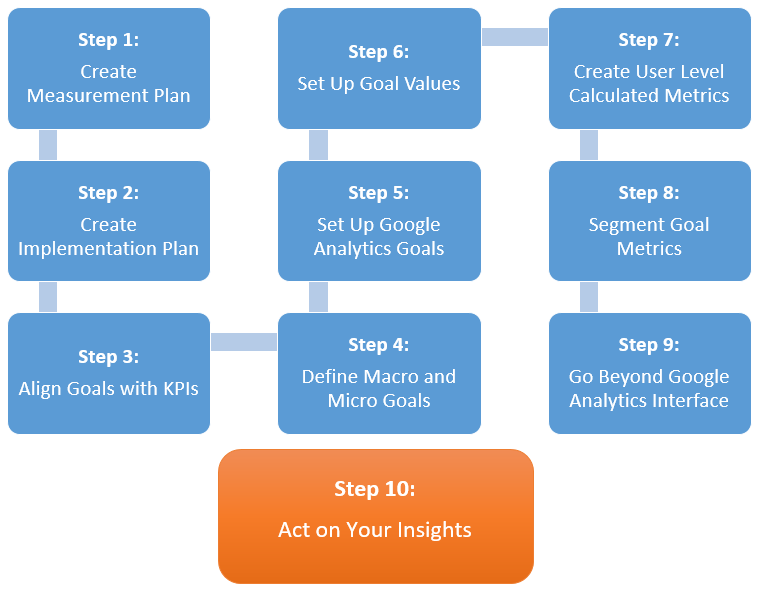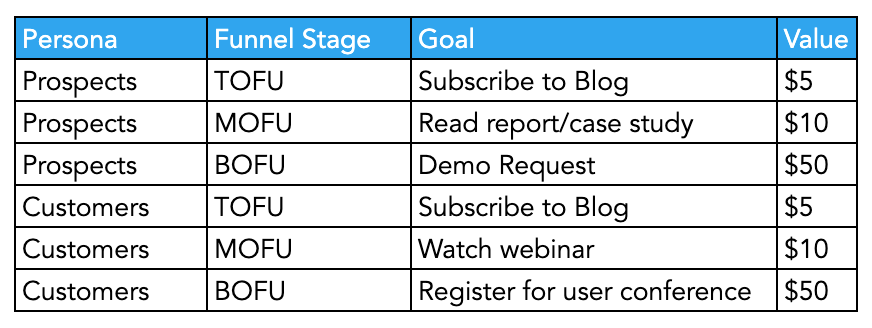Revealing the Blind Spots: Understanding What Google Analytics Goals Can not Gauge
In the realm of digital analytics, Google Analytics stands as a powerful tool for tracking and assessing on the internet user communications. Recognizing what Google Analytics goals can not determine is essential for acquiring a comprehensive view of user behavior and interaction.
Customer Habits on External Operatings Systems
Understanding just how customers engage on external systems is vital for enhancing online approaches. Outside systems, such as social media sites networks, reference internet sites, and online forums, play a substantial duty in driving website traffic to a company's internet site. By analyzing customer actions on these systems, businesses can get important understandings into the effectiveness of their advertising efforts and the choices of their target market.
One trick element of individual actions on outside platforms is the reference resource. By tracking where the users are originating from, companies can identify which systems are driving one of the most traffic to their website. This information can aid business assign their resources better, concentrating on the systems that yield the very best outcomes.

Offline Conversions and Communications
Examining user behavior on external systems gives important understandings right into on-line techniques; however, thinking about offline conversions and communications is just as necessary for a thorough understanding of a firm's general efficiency. While Google Analytics succeeds at tracking on the internet communications, it falls brief in recording the full client journey that frequently includes offline touchpoints. Offline conversions, such as in-store purchases or phone queries, play a substantial role in lots of services' success. Disregarding these communications can cause a distorted sight of the effectiveness of advertising projects and general business efficiency.

Acknowledgment Beyond Last Click
When diving right into the realm of digital advertising analytics, it comes to be important to look past the solitary touchpoint of the last click for an extra detailed understanding of acknowledgment. While Google Analytics provides important understandings right into customer actions, counting exclusively on last-click acknowledgment can be limiting - what data is google analytics goals unable to track. Attribution models that exceed the last click provide a much more nuanced sight of the consumer journey, taking into account all the touchpoints that bring about a conversion
Acknowledgment past the last click find this permits marketing experts to designate credit history to different interactions along the conversion path, giving a more clear image of the performance of various advertising channels. By exploring multi-touch attribution models such as straight, time degeneration, or position-based attribution, companies can better allot their advertising budget plans and optimize their approaches for optimal effect.
Understanding the impact of each touchpoint in the conversion process is essential for making informed choices and optimizing ROI. By embracing acknowledgment beyond the last click, businesses can get deeper insights right into customer actions and tailor their advertising and marketing initiatives much more efficiently.
Cross-Device and Cross-Browser Monitoring

Similarly, cross-browser tracking matches cross-device tracking by catching customer actions as they switch between different web browsers. Comprehending how users communicate with web sites on numerous internet browsers can aid online marketers enhance their on-line experiences to guarantee consistency and performance across different platforms.
Qualitative Data and User Intent
Understanding customer intent via qualitative information evaluation is crucial for developing targeted digital marketing techniques that resonate with the requirements and choices of the target audience. Qualitative data supplies understandings into the 'why' behind user actions, shedding light on inspirations, feelings, and choices that quantitative data alone can not capture. By examining customer responses, remarks, and interactions, marketing professionals can discover important information concerning individual intent, enabling them to tailor their messaging, content, and offerings to much better line up with what their audience is looking for.
Qualitative information also aids in recognizing the context in which individuals engage with a website or application. This contextual understanding allows online marketers to develop more appropriate and from this source customized experiences, ultimately driving greater engagement and conversion prices. By delving into user intent with qualitative data evaluation, companies can obtain a deeper understanding of their target market, causing more reliable advertising and marketing methods that meet individuals' expectations and needs.
Verdict
Finally, Google Analytics objectives have limitations in gauging individual habits on outside systems, offline conversions, attribution past last click, cross-device and cross-browser monitoring, and qualitative data associated to user intent. what data is google analytics goals unable to track. It is very important for businesses to be familiar with these unseen areas in order to supplement their data analysis with other devices and techniques to gain an extra thorough understanding of their target market and improve their total electronic advertising methods
By analyzing user behavior on these platforms, organizations can acquire valuable insights right into the performance of their marketing efforts blog here and the preferences of their target audience.
Examining user actions on external systems gives beneficial understandings into on-line methods; however, thinking about offline conversions and communications is just as vital for a detailed understanding of a business's total efficiency.In electronic advertising and marketing analytics, relocating past last-click acknowledgment to check out cross-device and cross-browser monitoring is important for acquiring an alternative understanding of individual interactions across various platforms and tools. By assessing user feedback, remarks, and communications, online marketers can uncover valuable details concerning customer intent, permitting them to customize their messaging, web content, and offerings to much better line up with what their audience is seeking.
By diving right into user intent with qualitative data analysis, businesses can obtain a much deeper understanding of their target audience, leading to a lot more effective advertising and marketing methods that satisfy users' needs and assumptions.